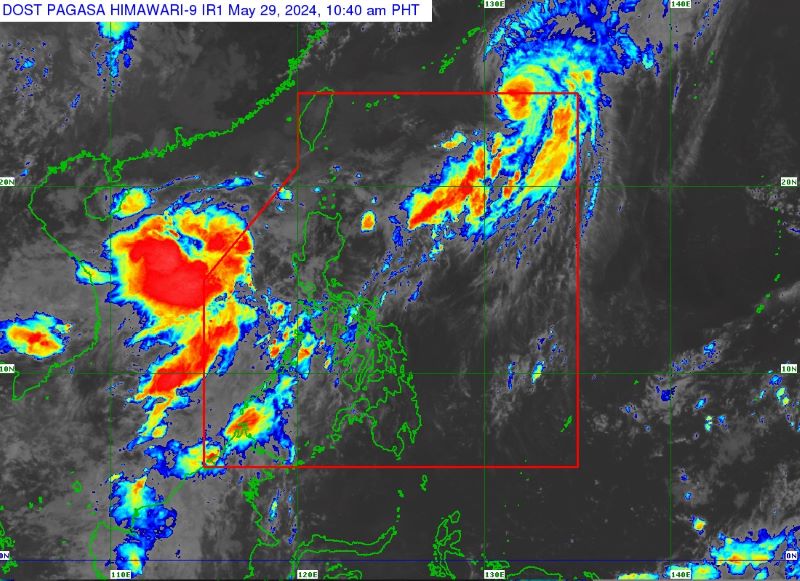Rainy season not yet here despite Aghon - PAGASA

The Philippines was transitioning to the wet season when Typhoon Aghon entered the country last week. Aghon brought much-needed rain to communities affected by El Niño-induced drought, but it also caused fatalities and the proclamation of a state of calamity in several parts of Luzon.
Meanwhile, the heat index reached 55°C in Guiuan, Eastern Samar on May 26, the highest so far this year, while Aghon was in Philippine territory.
In this three-part series, GMA News Online looks into the effects of Aghon on the weather during the transition period, the reasons behind the country's first tropical cyclone forming only in May, and what to expect in the months ahead.
FIRST OF THREE PARTS
Typhoon Aghon, the first tropical cyclone to enter the Philippine Area of Responsibility this year, lashed parts of Luzon with heavy rain and strong winds over the weekend, leaving a trail of destruction in its wake.
In Quezon, at least 19 cities and municipalities in two districts declared a state of calamity following the massive floods triggered by the heavy rain.
Farmlands were likewise flooded while strong winds toppled houses and uprooted trees.
At least seven people were killed, including an infant in Padre Burgos, Quezon, after their house was swept away by floods on Saturday evening.
According to the weather bureau PAGASA, Aghon has made nine landfalls since its entry on May 24. On Sunday, PAGASA warned of heavy rainfall of up to 200 millimeters in Quezon.
“Sa Quezon, specifically Tayabas, ‘yung monthly normal nila is nasa 159.7 mm. Ang percentage ay at least 150% ang inakyat sa normal na dami ng ulan na binubuhos sa buwan ng Mayo,” said PAGASA weather forecaster Glaiza Escullar at a news conference.
(In Quezon, specifically Tayabas, the average rainfall for May is 159.7 mm. Because of Aghon, the rainfall volume increased by 150%.)
But while the typhoon brought rain, PAGASA weather specialist John Manalo said the rainy season has yet to start in the Philippines.
“Yes, may contribution po siya though hindi natin maaaring sabihin na directly siya yung nag-trigger, but yung mga rain bands na dala niya is isa sa mga criteria natin,” Manalo told GMA News Online.
(The typhoon contributed, though we cannot say it directly triggered the rainy weather. But the rain bands it brought are among the criteria.)
According to PAGASA, at least 25 mm of rainfall should be experienced for five days, with at least 1 mm for three consecutive days for the wet season to be officially declared.
Prevailing winds should also have westerly components.
At least seven out of the 13 PAGASA stations should meet the criteria.
“Currently, 6 [stations[ out of 13 pa lang,” he added.
(Currently, only six out of the 13 stations have met the criteria.)
Manalo said that the start of the rainy weather may be delayed due to the El Niño phenomenon but may possibly be declared ''soon.''
The wet season in the Philippines usually begins during the last week of May or the first week of June.
Last year, PAGASA declared the start of the rainy season on June 2. —VBL, GMA Integrated News




